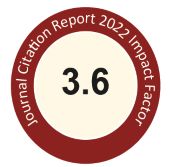Abstract
In the pursuit of bioactive compounds with health benefits from food and medicinal plants, optimization of process to reduce solvent, raw material, energy and time consumption has been a valuable research objective. Sustainable management and efficient use of natural resources are of critical importance for sustainability goals. In this manner, microwave extraction of red cabbage which has been a mass cultivated plant for food purposes, was optimized for maximizing acetylcholinesterase, butyrylcholinesterase, tyrosinase inhibitory activity and bioactive content. Quantitative analysis of total phenol, flavonoid and anthocyanin content were performed using spectrophotometry and UPLC-DAD-ESI-MS/MS. Optimum conditions were determined as 600 W, 100% ethanol, 12 min for butyrylcholinesterase inhibitory and 800 W, 50% ethanol, 4 min for tyrosinase inhibitory activity. Microwave extraction outperformed conventional solvent extracts (hexane, dichloromethane, 2-methyl tetrahydrofuran, ethanol, 70% ethanol and water) in terms of activity and content. The isolated fraction containing major anthocyanins as cyanidin-3-sophoroside-5-glucoside and cyanidin-3-(sinapoyl)-sophoroside-5-glucoside was identified as the responsible portion for tyrosinase inhibitory activity. The dominant anthocyanins rich fraction of the optimum microwave extract can be considered for the production of antityrosinase products, while the identification of inhibitor metabolites for acetylcholinesterase and butyrylcholinesterase can be targeted for future studies considering red cabbage as a valuable source.
Recommended Citation
Koyu, Halil; Demir, Serdar; and Haznedaroglu, Mehmet Zeki
(2023)
"Investigation of microwave extraction of red cabbage and its neurotherapeutic potential,"
Journal of Food and Drug Analysis: Vol. 31
:
Iss.
4
, Article 4.
Available at: https://doi.org/10.38212/2224-6614.3478
Creative Commons License

This work is licensed under a Creative Commons Attribution-Noncommercial-No Derivative Works 4.0 License.
Included in
Food Science Commons, Medicinal Chemistry and Pharmaceutics Commons, Pharmacology Commons, Toxicology Commons


Abstract Image